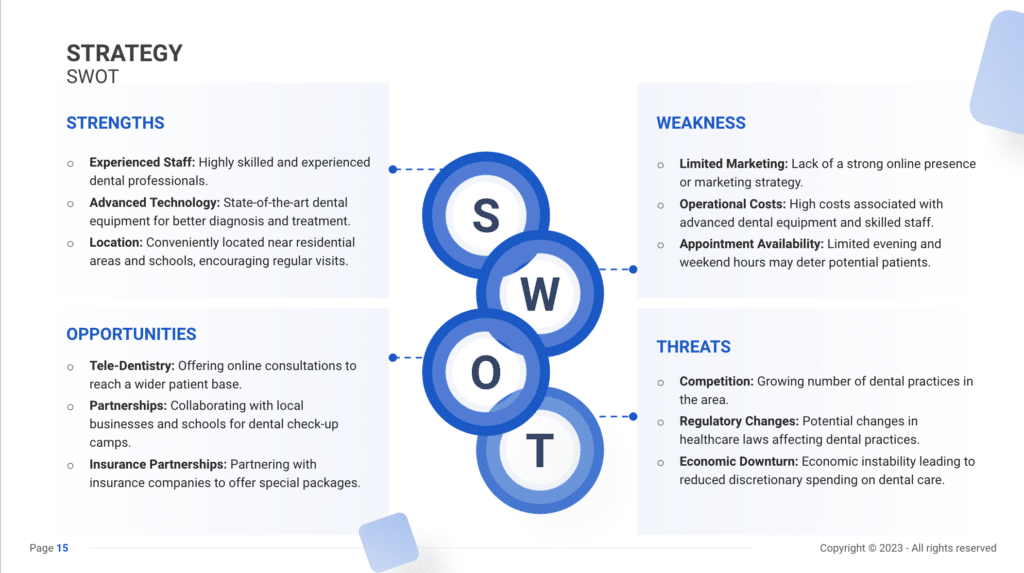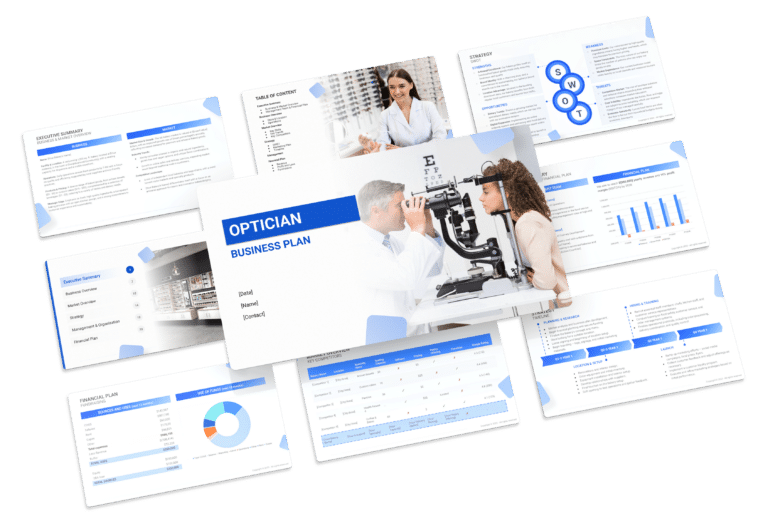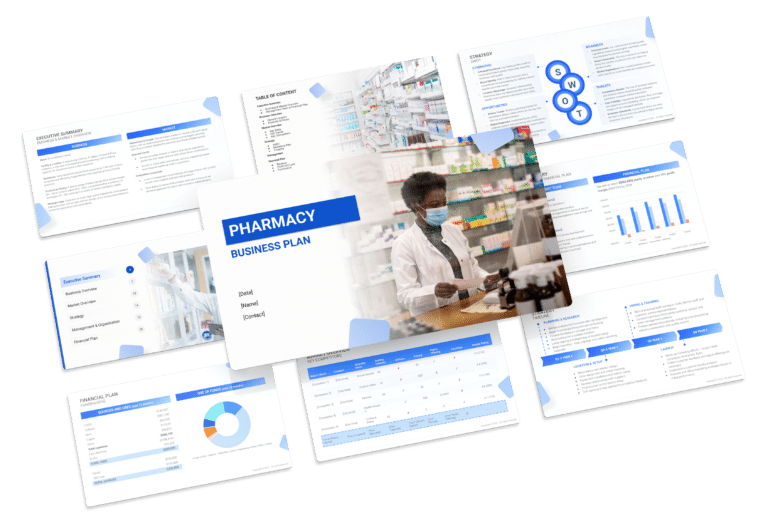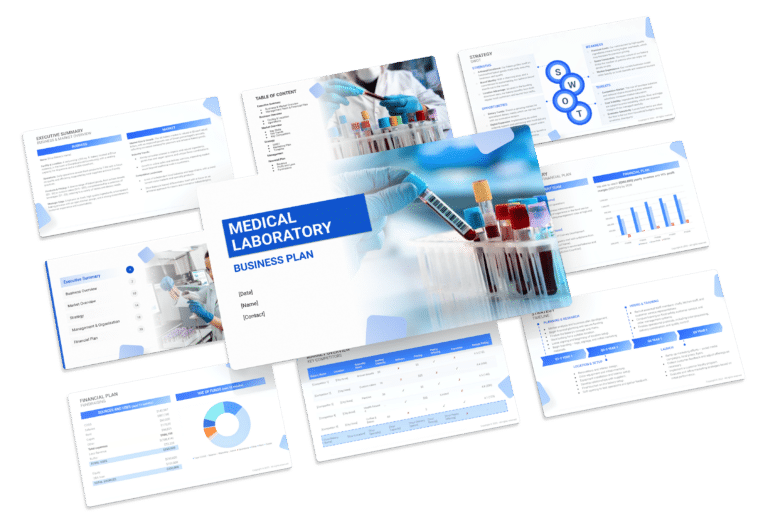How to Prepare a SWOT for a Dental Practice (Example)

Conducting a SWOT analysis is paramount in shaping a comprehensive business plan for a dental practice. SWOT (Strengths, Weaknesses, Opportunities, Threats) serves as a framework, enabling practitioners to assess internal control factors and external influences.
While strengths and weaknesses reside within the clinic’s sphere of control, opportunities and threats are external factors that can influence the dental practice. Incorporating a SWOT analysis into the business plan empowers dental professionals to evaluate their position in the market, pinpoint growth areas, and address potential challenges.
Strengths may include advanced dental technology and a skilled team, while weaknesses could involve limited service offerings or outdated equipment. This article will explore diverse examples of strengths and weaknesses, providing dental practitioners with valuable insights for integrating them into their business plans effectively.

Strengths
- Reputation for Excellence: A dental practice with a stellar reputation is a magnet for new patients.
- Example: Positive online reviews can boost visibility and attract more clients.
- Advanced Technology: Utilizing cutting-edge dental equipment can enhance treatment outcomes.
- Example: Investing in painless laser procedures can be a unique selling point.
- Expert Staff: A team of skilled dental professionals is the backbone of a successful practice.
- Example: Highlighting staff qualifications in marketing materials can build trust.
- Comprehensive Services: Offering a wide range of dental services under one roof can be a major draw.
- Example: Providing orthodontics and cosmetic dentistry can retain patients seeking multiple services.
Weaknesses
- Limited Marketing: A lack of robust marketing strategies can hinder patient acquisition.
- Example: An outdated website may fail to attract tech-savvy patients.
- Operational Inefficiencies: Inefficient processes can lead to longer wait times and patient dissatisfaction.
- Example: Streamlining appointment scheduling can greatly improve patient experience.
- High Overhead Costs: Dental practices often face significant expenses, impacting profitability.
- Example: Negotiating with suppliers can reduce equipment costs.
- Patient Retention Challenges: Keeping patients engaged and loyal is an ongoing struggle.
- Example: Implementing a patient loyalty program can encourage repeat visits.
Opportunities
- Emerging Technologies: Adopting new technologies can offer improved care and attract patients.
- Example: 3D printing for dental prosthetics can be a game-changer.
- Community Partnerships: Collaborating with local businesses can expand a practice’s reach.
- Example: Partnering with schools for dental health talks can increase visibility.
- Expanded Services: Introducing new specialties can cater to unmet needs in the community.
- Example: Adding pediatric dentistry can attract families to the practice.
- Healthcare Trends: Leveraging trends like tele-dentistry can open up new revenue streams.
- Example: Offering virtual consultations can differentiate the practice.
Threats
- Competitive Market: The increasing number of dental practices creates a highly competitive environment.
- Example: A new practice nearby can divert potential patients.
- Regulatory Changes: New healthcare regulations can impose additional operational burdens.
- Example: Compliance with new privacy laws may require costly system updates.
- Economic Downturns: Economic instability can lead to a reduction in elective dental procedures.
- Example: Offering financing options can help maintain patient volumes during tough times.
- Technological Disruptions: Failing to keep up with technological advancements can render a practice obsolete.
- Example: Not adopting digital record-keeping can put a practice at a disadvantage.





